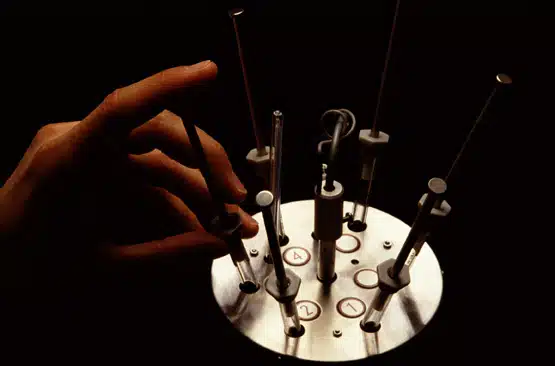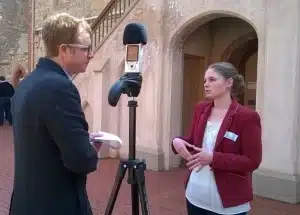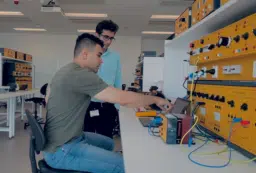Enduring a risky but important prenatal diagnostic procedure is one of scariest aspects of pregnancy for women aged over 35. Marnie Winter wants to remove that trauma through developing a safer way to analyse fetal DNA in the early months of gestation.
“I’m working on a new technique to isolate fetal cells from maternal blood so they can be used for genetic analysis,” says Marnie.
During pregnancy, around 1 in a million of the large cells circulating in the mother’s blood originate from the fetal side of the placenta. Marnie’s procedure uses a small spiral silicone chip to specifically select those cells from within a blood sample.
“Once we’ve isolated a fetal cell, we can then look for markers in its DNA,” explains Marnie.
Testing DNA from a baby during pregnancy provides parents with early indications of disease or abnormalities. Currently the standard way to access fetal DNA is to remove cells via surgical techniques.
“Procedures such as amniocentesis or chorionic villus sampling to collect foetal cells do carry a risk of inducing miscarriage,” Marnie says.
“We hope that our less-invasive approach can provide couples with a safe option to perform pre-natal genetic analysis.”
Marnie is based at the University of South Australia, and is working with collaborators from the Women’s and Children’s Hospital (Adelaide) as well as the University of New South Wales to develop the chip-based technique.
Marnie presented her research at Fresh Science South Australia 2015.
Fresh Science is a national program that helps early-career researchers find and share their stories of discovery. Over 30 early-career researchers nominated for Fresh Science SA, which was held at the South Australian Museum (training) and The Lion Hotel (public challenge event).
Fresh Science South Australia was supported by the The University of South Australia, The University of Adelaide, Flinders University and the South Australian Museum.
Contact: Marnie Winter, University of South Australia, marnie.winter@mymail.unisa.edu.au






 Fresh Science is on hold for 2022. We will be back in 2023.
Fresh Science is on hold for 2022. We will be back in 2023.